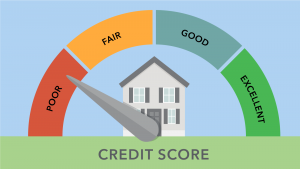 One of Fannie Mae’s missions is to facilitate equitable and sustainable access to homeownership and quality affordable rental units across the country which provide a stronger and more efficient housing system for all. But as a major source of mortgage financing in the U.S., the Government Sponsored Enterprise (GSE) needs to be at the cusp of affordable housing as it helps facilitate the flow of capital into the housing market by issuing and guaranteeing mortgage-related securities that are purchased by investors the world over.
One of Fannie Mae’s missions is to facilitate equitable and sustainable access to homeownership and quality affordable rental units across the country which provide a stronger and more efficient housing system for all. But as a major source of mortgage financing in the U.S., the Government Sponsored Enterprise (GSE) needs to be at the cusp of affordable housing as it helps facilitate the flow of capital into the housing market by issuing and guaranteeing mortgage-related securities that are purchased by investors the world over.
But as of late, investors have expressed interest in socially conscious investment options that allocate capital to support affordable housing and access to credit for underserved individuals. But as investors seek additional to guide their investment decisions, this additional data breaches privacy by allowing enough vectors for someone to deduce the identity of even specific borrowers.
“As one of the largest issuers of mortgage-backed securities (MBS) in the United States, Fannie Mae plays a delicate role, one that seeks to support the mortgage consumer, the mortgage investor, and the efficient functioning of the MBS market,” said Fannie Mae in a recent blog post. “Balancing investors' desire for information with the need to protect the privacy of the mortgage consumer requires creative solutions that consider both sets of stakeholders.”
Knowing this, the GSE is introducing a proposed methodology for single-family social disclosure data. It aims to provide investors with insights into socially oriented lending in new ways designed to help preserve the confidentiality of mortgage consumer’s personal information.

A Single-Family Social Index
At the core of the design are three key outcomes we seek to achieve with the Single-Family Social Index (Social Index).
- Prioritize the borrower. A key objective is to work to protect borrower information while seeking to meet the needs of MBS investors.
- Allow investors to identify pools with high concentrations of loans that meet certain social criteria. Underpinning this proposal is the concept that social disclosures should facilitate the identification of MBS pools containing loans made to borrowers meeting certain social criteria such that market participants are empowered to invest in support of these lending activities. While a correlation with loan performance is likely, the proposal contemplates that it is not essential for social disclosures to optimize performance insights. At the same time, we recognize that historical performance analysis is necessary to support investor decision-making.
- Propose a solution for the industry, not just for Fannie Mae. Create a methodology that other Agency and non-Agency residential MBS issuers may desire to adopt, which in turn we hope will drive greater standardization for social investment in residential MBS and amplify the impact of these activities, furthering support for mortgage consumers.
The Social Index is contemplated as a scoring system comprised of three dimensions for which socially minded investors have expressed interest: income, borrower, and property characteristics. We then further define these dimensions using eight objective criteria that reflect Fannie Mae mission-focused activities, the same criteria we use to engage our lender partners to expand homeownership to these individuals in these markets. These eight criteria (Exhibit 1) would be evaluated for each loan pooled in a majority of our Single-Family MBS. Any loan meeting one or more of the eight criteria would be deemed socially oriented for the purpose of this disclosure.
Additionally, each loan would be assigned a score between zero (0) and three (3), reflecting the count of the three dimensions whose criteria are met by that loan. The Social Index is flexible, and the underlying criteria can be adjusted based on market feedback and as the focus of single-family social lending evolves.
To achieve the borrower privacy goals outlined above, neither the loan-level social scores, nor the borrower and geographical attributes used to generate them, would be made publicly available at the loan or pool-level. This mitigates the risk that additional disclosure elements might facilitate increased borrower identification from our disclosures or a combination of our disclosure with other third-party sources and helps avoid exposing this borrower information.
Click here to see more of Fannie Mae’s proposed “social index” score.

 DSNews The homepage of the servicing industry
DSNews The homepage of the servicing industry









